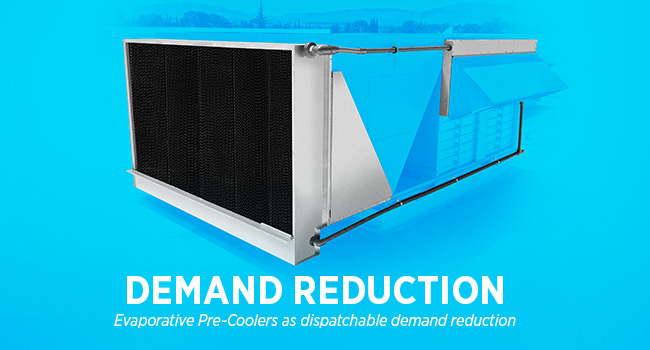New working paper on pre-coolers as a dispatchable demand reduction measure

DualCool Evaporative pre-cooler from Integrated Comfort is an example pre-cooler technology that could be used as a dispatchable demand reduction to reduce use of peak-power plants and stabilize the grid.
How should we value demand reduction from air conditioning efficiency?
Peak electrical demand in California can be attributed mainly to air conditioning. Although a large shift toward intermittent renewables is also introducing new challenges for dynamic management of the electric grid, the peak requirement for conventional generation in the summertime is projected to remain nearly the same. The economic and environmental costs associated with peak generation are significant. Improvements to the full-load efficiency of air conditioning is one of the most direct means to ease peak demand challenges. To the extent that air conditioning efficiency can be dispatched reliably, these technologies might also provide ancillary services to support reliable grid management.
Air conditioning efficiency offers unique advantages compared to other energy management measures, and should be valued for these specific benefits: It can reduce short term wholesale electricity costs, it can contribute to grid stability, it can defer long term public investments in electricity generation, transmission and distribution infrastructure, and it provides more significant environmental benefits by avoiding operation of more polluting peaking power plants.
One way to recognize this value would be to compensate customers for demand reduction from air conditioning through the wholesale electricity market, as if it were equivalent to the cost of avoided generation. In fact, in 2011 the Federal Energy Regulatory Commission issued an order (FERC 745) that would regulate the wholesale electricity market in a way that enables the direct compensation of demand side resources in this way, as long as demand reduction provides net economic benefits. The directive was fashioned around demand response measures, but we believe that the concept introduces important ideas about how air conditioning efficiency could be valued and controlled.
WCEC is developing research on these issues, and helping industry partners to understand the emerging business opportunities for demand side resources. We’ve developed a working paper to explore the topic, and invite input and feedback from industry and researchers:
The wholesale market value of dispatchable efficiency for commercial air conditioning
The working paper develops an argument for how demand reduction from air conditioner efficiency ought to be compensated on the wholesale electricity market, and envisions business strategies that could use dispatchable air conditioner efficiency as a substantial peak demand reduction measure. We welcome your input and feedback.
. . . . . . . . . . . . . . . . . . . . . . . . . . . . . . . . . . . . . . . . . . . . . . . . . . . . . . . . . . . . . . . . . . . .

